
views
Running Efficiently

Set a good pace. You may be tempted to go all out when you get started in your run, but try to reign in that impulse because you’ll tire out quickly. Instead, run at a pace that you know you can sustain almost indefinitely. Stick to the pace that you set. Keep track of your time and the distance you’re covering so you can track your pace and adjust to keep it consistent.

Relax your neck and shoulders while you run. Keep your chin up and your shoulders back but relaxed so you’re not holding tension. The only muscles that should be kept tight are your core muscles. Holding tension in your neck and shoulders can strain your neck and fatigue your muscles, which means you won’t be able to run as long. Keep your upper body relaxed while you run.

Swing your arms when you run. Hold your arms at a 90-degree angle at the elbow and keep them tight to your body as you run. Move your arms back and forth at the shoulder to help balance your body as you run and to give you forward momentum. Swinging your arms also helps keep the movement of your legs in rhythm.

Re-establish a rhythm with your breathing to keep from getting tired. At the top of every new mile, spend the first minute breathing in through your nose and out through your mouth. Focusing on breathing through your nose will help you get your breathing back into a rhythm. When you breathe deeply through your nose, it causes you to breathe from your belly, incorporating your diaphragm, which stabilizes your core and will help you run further without getting tired.
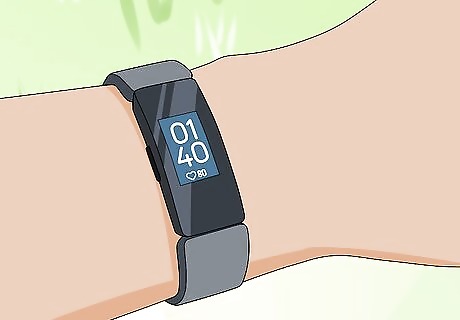
Monitor your heart rate as you run. Keep track of the intensity of your run by monitoring your heart rate so you don’t push too hard and tire yourself out. Wear a heart rate monitor device or a fitness tracker that can keep track of your heart rate so you can monitor it while you’re running.Tip: Calculate your target heart rate before you run so you know what range you need to stay in.

Run with a friend or join a runner’s group. Start running with a friend to boost your motivation. Look in your area to see if there are running groups that you can join to help you improve. The more you run, the better you’ll be at running without getting tired and a buddy or group can help motivate you to go running. Running with a group will also add a little bit of competition, which can help make you feel less tired. The social interaction that comes with running with other people can distract you from feeling tired.
Improving Your Endurance

Listen to music when you run to improve your endurance. Music is a great way to motivate yourself to keep running and distract yourself from feeling tired. Studies show that music can reduce your perception of fatigue by up to 10%. So fire up some music that you like to keep yourself going! Try making playlists designed to motivate you while you’re running. Be careful running through areas with high traffic while listening to music.
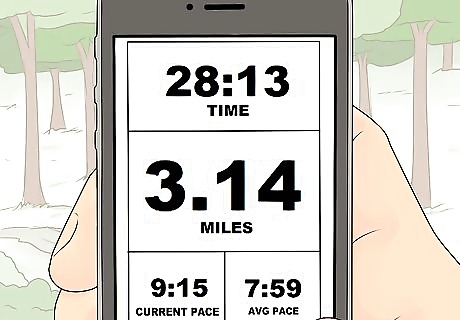
Keep track of the distances that you run. Write down the distance you ran and the time it took you to run after every run you do so you can compare and track your progress. It can be helpful to have a time and a distance to beat to help motivate yourself to push further. Use a running app to track your distance and times for easy reference.
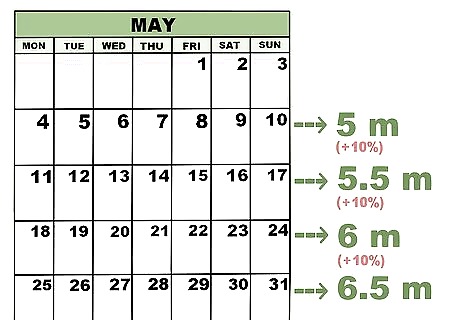
Increase the distance of your runs by 10% each week. Follow what’s known as the “10 percent rule.” It’s just a little bit extra to tack on, but over time, you will dramatically improve your ability to run without getting tired. Slowly increasing your total distance allows your body to adjust and acclimate to the new challenge without risking injury. For example, if you run 5 metres (0.0050 km) a week, increase the distance to 5.5 metres (0.0055 km) the following week.
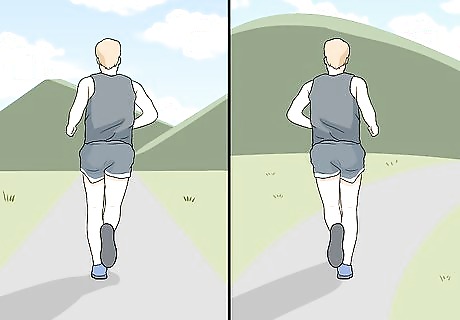
Alternate difficult and challenging runs with easy ones. Use the “hard-easy” rule to improve your endurance. The key is to really push yourself during the hard runs. Because you can’t push yourself to the limit every time you run, the “hard-easy” rule allows you to keep running while also improving your endurance and giving your body time to recover and heal. It will also help keep you from overtraining and injuring yourself.Tip: Think of your runs as being on a difficulty scale of 1-10. Instead of doing consistently doing runs that are about a 5, try doing a run that is an 8 difficulty one day and then a 3 difficulty another. Over time, your body will be able to run further without getting tired.

Add sprints into your routine to build up your cardio. Sprinting is a great way to ramp up your cardiovascular endurance so you can run without getting tired. Use sprints to build up your overall running endurance and to change up your routine so you don’t get bored. Try a hill workout. Sprint for 10-20 seconds up a hill or on a treadmill with an incline. Repeat it 3-5 times. Use interval sprints by sprinting for 50 meters, then jogging for 50 meters. Repeat the process 5 times.
Taking Care of Your Body
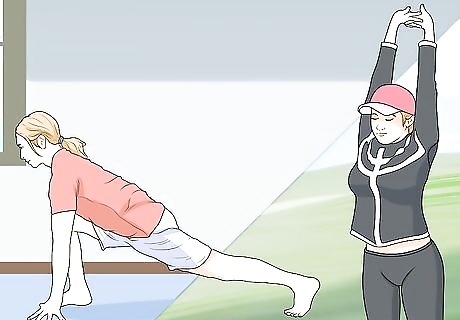
Warm up and stretch to prepare your body for a long run. If you don’t properly stretch, you can pull a muscle, especially if you’re trying to run a long distance. However, do not stretch without first warming up your muscles. Stretching cold muscles could actually cause an injury. Tip: Kill 2 birds with 1 stone by doing dynamic stretches. Try doing 30 seconds of each of these exercises: walking lunges, body-weight squats, high-knees, and jumping jacks.

Load up on carbs before you run. Two hours before you go for a run, eat a large meal with lots of carbs. Eat a bunch of pasta, rice, or whole wheat bread to build up your glycogen stores so you can run without getting tired. Make sure you don’t eat a large meal and run before you’ve had a chance to digest the food or you could get sick or get a cramp. Avoid simple carbs like sugar.

Drink lots of water. Drink at least 16 fluid ounces (0.47 L) of water 30 minutes before you go for a run. While you’re running, drink as much water as you need to keep yourself hydrated so you can keep running. If you get dehydrated, you’ll start to feel tired. If you’re running in the heat, you will need to drink even more water to replace the water you lose in your sweat. Proper hydration is critical to prevent muscle cramps as well.

Have some caffeine before you run to boost your energy. Drink a cup of coffee or an energy drink before you run to give your body a jolt of caffeine that can help you run further without getting tired. The caffeine will also make you feel motivated to keep running. Be careful about consuming too much caffeine or you could raise your heart rate too high.

Wear breathable clothing so you won’t overheat. As you run, your body temperature can rise by as much as 15 °F (8.5 °C), which can cause you to fatigue and force you to stop running. Avoid cotton clothing, which can get wet, hot, and sticky and can weigh you down. Use synthetic clothing designed for exercise. If you’re running in colder temperatures, avoid running in a coat or sweatshirt. Your body will warm up not long after you start running.
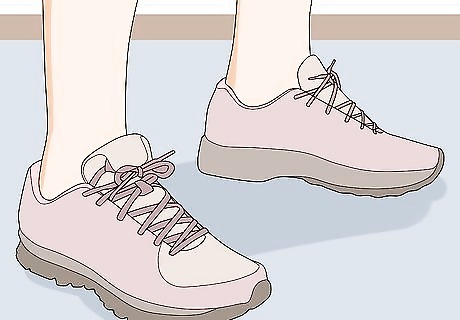
Get a good pair of running shoes. Running long distances can take a toll on your feet and legs, so invest in a pair of shoes that are designed for running long distances. If your feet are comfortable, they’re less likely to cramp up and your legs will be able to go for longer with getting fatigued. Try on a few different pairs of shoes to find the most comfortable ones. Look for a shoe that is as close to running barefoot as possible.


















Comments
0 comment